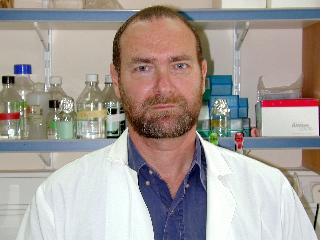A group of researchers from Tel Aviv University has developed a way to grow insulin-producing human cells in the laboratory.

A group of researchers from Tel Aviv University has developed a way to grow insulin-producing human cells in the laboratory. In the work, published in the journal Proceedings of the National Academy of Sciences USA, stem cells from human fetal liver grown in tissue culture were used. The group, led by Prof. Shimon Efrat from the Sackler School of Medicine, in collaboration with researchers from the USA, showed that these cells can be turned into insulin-producing cells, which can be easily multiplied in the laboratory. These cells produced about a third of the insulin of normal beta cells. Transplanting them into diabetic mice cured the disease and maintained a normal level of sugar in their blood for months.
The steep increase in the prevalence of diabetes, which affects 8% of the world's population, has made it one of the main public health problems. Diabetes is the most common cause of heart and kidney disease, stroke, blindness and amputation. The annual expenditure for the treatment of diabetes and its complications reaches 100 billion dollars in the USA alone. These alarming trends emphasize the urgent need to develop new therapeutic approaches.
The increase in blood sugar concentration, which is characteristic of all diabetics, is caused in two different ways. In type 1 diabetes (juvenile diabetes) the cause is the destruction of the cells that produce the hormone insulin, beta cells in the pancreas, by the immune system. In contrast to type 2 diabetes, which is 10 times more common and mainly affects adults over the age of 45, the cause is a low sensitivity of the body's cells to insulin, combined with a decrease in its production. Type 2 diabetes is associated with obesity and lack of physical activity, which cause its increase in prevalence in Western society.
The treatment of type 1 diabetes with insulin injections does not prevent its complications in the long term, due to the difficulty of accurately dosing the insulin in changing states of the body. Curing the disease will require replacing the damaged beta cells with new cells through a transplant. This treatment may also benefit type 2 diabetes patients, who are treated in the early stages of the disease with drugs to increase insulin secretion, in combination with a strict regimen of diet and physical activity. As the disease progresses, about a third of type 2 diabetes patients need high-dose insulin injections.
Pancreas transplants are performed only in the minority of cases, due to the lack of organ donation. In addition to the problem of graft rejection associated with any transplant, in type 1 diabetes the immune system may destroy the transplanted beta cells in the same way it damaged the autologous cells. Research in this field therefore faces a double challenge: developing available sources of beta cells for transplantation, by growing them in tissue cultures, and developing ways to protect them from being destroyed by the immune system.
Normal beta cells are unable to reproduce outside the body. In recent years, researchers have been trying to create beta cells in culture by using stem cells. These are cells whose role is to create the various tissues in the fetus as well as take care of the regeneration of the various tissues during adult life. These cells maintain the ability to multiply outside the body and are able to develop into a variety of cell types. Prof. Efrat tries to apply the knowledge about the genes that direct the formation of beta cells during the development of the pancreas in the fetus to direct stem cells in tissue culture to develop into insulin-producing beta cells. The measures include the introduction of genes into the cells, which dictate the direction of their development, as well as the addition of various substances to the culture fluid of the cells, which affect the activation of genes within cells.
The cells described in the article may be used for transplantation in patients, if a way is found to protect them from immune rejection. This will pave the way for the treatment of juvenile diabetes which will be available to every patient, regardless of organ donation.
https://www.hayadan.org.il/BuildaGate4/general2/data_card.php?Cat=~~~534318647~~~25&SiteName=hayadan
